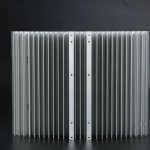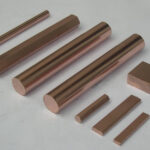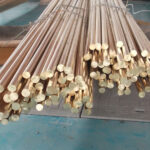The first use of brass to make money in our country began in the Jiajing period of the Ming Dynasty. The term “brass” was first seen in the “Shen Yi Jing·Zhonghuang Jing” written by Xishuo in the Western Han Dynasty: “There are palaces in the northwest, and the brass walls are inscribed in the palace of the sun and earth.” This type of “brass” refers to What kind of copper alloy is it, to be tested. “Xin Tang Shu Shi Hu Zhi” also has the titles of “bronze” and “brass”, which separately refer to the color of the ore and the smelted product, but it is not the current copper-tin alloy and copper-zinc alloy. Song man Hong Zikui wrote “Daye Fu” “It is also a brass, the pit has a special name, the mountains are numerous and simple”, which refers to the pure copper refined by the fire method. The term brass refers specifically to the copper-zinc alloy, which began in the Ming Dynasty. The record can be found in “Ming Hui Dian”: “The example of Jiajing Zhongzie, Tongbao is 6 million liters, forty-seven thousand two hundred and seventy-two catties of Erhuo brass… “After the process of elucidating the composition of the copper coins in the Ming Dynasty, the real brass in the founding of the “Ming Hui Dian” appeared much later than the other copper alloys. This is because the metal zinc in the brass It is more difficult to obtain. Zinc oxide can be quickly restored to metallic zinc at a high temperature of 950°C to 1000°C, while liquid zinc once boiled at 906°C, so the restored metallic zinc exists in vapor form.
The reaction reverses during cooling, and the vapor zinc is carbon dioxide in the furnace and then oxidized to zinc oxide, so special condensing device is necessary to obtain metallic zinc. This is the reason why the application of metallic zinc is much later than the application of copper, lead, tin, and iron, and it is also one of the reasons why brass coinage appears late. However, brass sheets and brass tubes with a zinc content of more than 20% were unearthed in the Yangshao civilization relics of Jiangzhai, and two types of brass cones were also unearthed from the Longshan civilization of Sanlihe, Jiao County, Shandong Province. It goes without saying that the appearance of these brass utensils is not to say that people controlled the smelting skills of brass in prehistoric times, but that people got it inadvertently when they applied the copper-zinc symbiosis mine.
The zinc content of bronzes in the Shang and Zhou dynasties was very low, usually on the order of 10-z. The coins of the Western Han Dynasty and Xinmang contained individual copper, zinc, and sweet money. Some of these currencies contained 7% of zinc. However, this does not clarify that brass coinage occurred in Xinmang of the Western Han Dynasty. Because these copper-zinc alloys are extremely individual signs, their zinc content is much smaller than the true brass zinc content of 15%-40%. So we think these zinc-containing copper coins occurred when the Han Dynasty applied copper-zinc symbiosis ore in the “Jishan Zhuqian”. According to the discovery after stopping inquiries and visits to relevant mines, Changwei, Yantai, Linyi, Hubei and other places in Shandong have abundant copper-zinc symbiosis mines, which makes the copper after smelting contain a small amount of zinc. In the Tang Dynasty, due to the standardization of the coinage materials, the zinc content in the coins of the coinage was constant.
Link to this article:The growth history of H62 brass rod
Reprint Statement: If there are no special instructions, all articles on this site are original. Please indicate the source for reprinting:Alloy Wiki,thanks!^^







